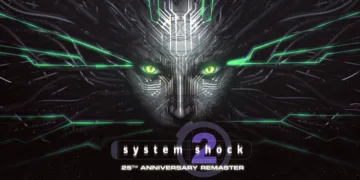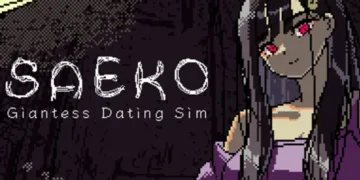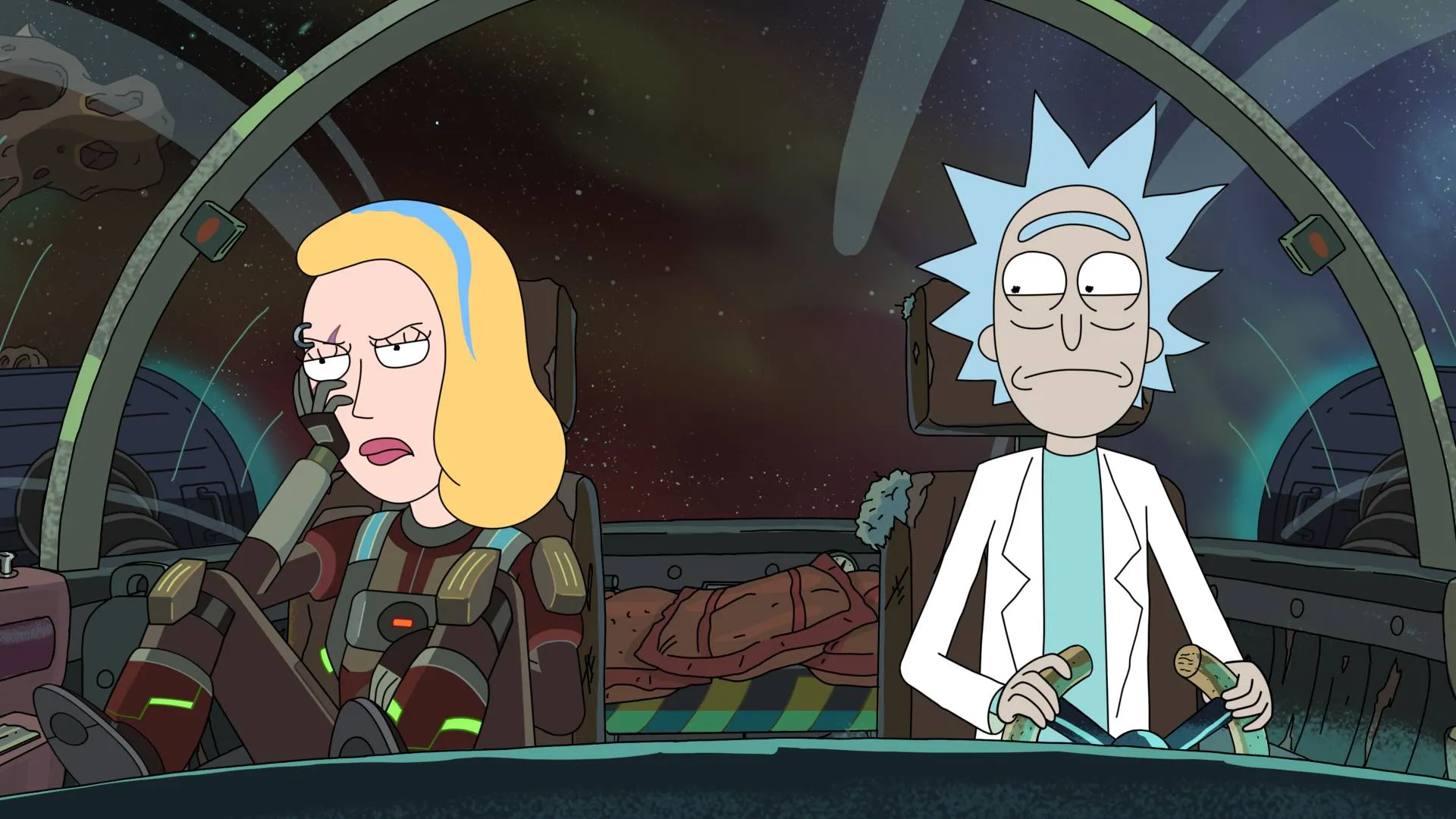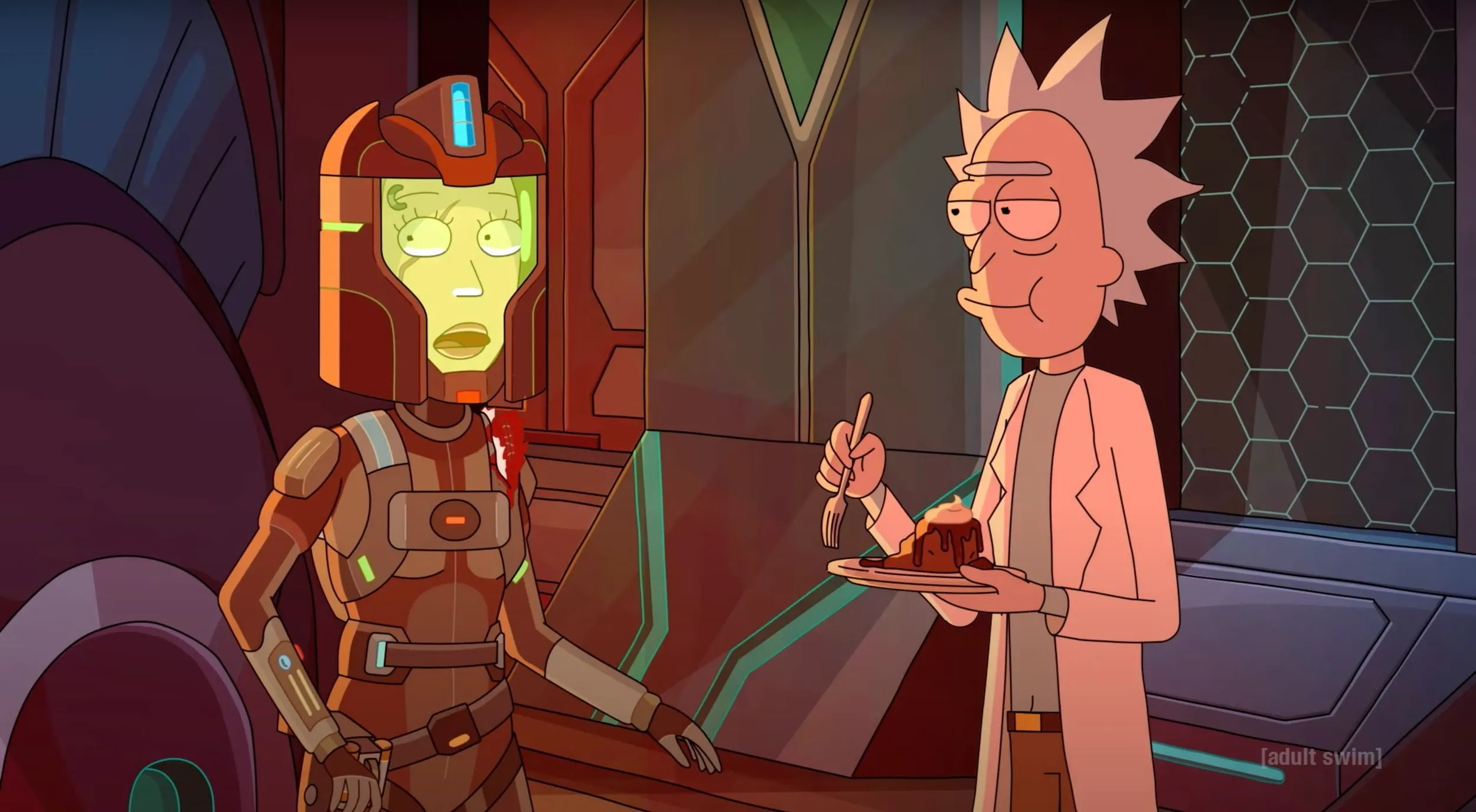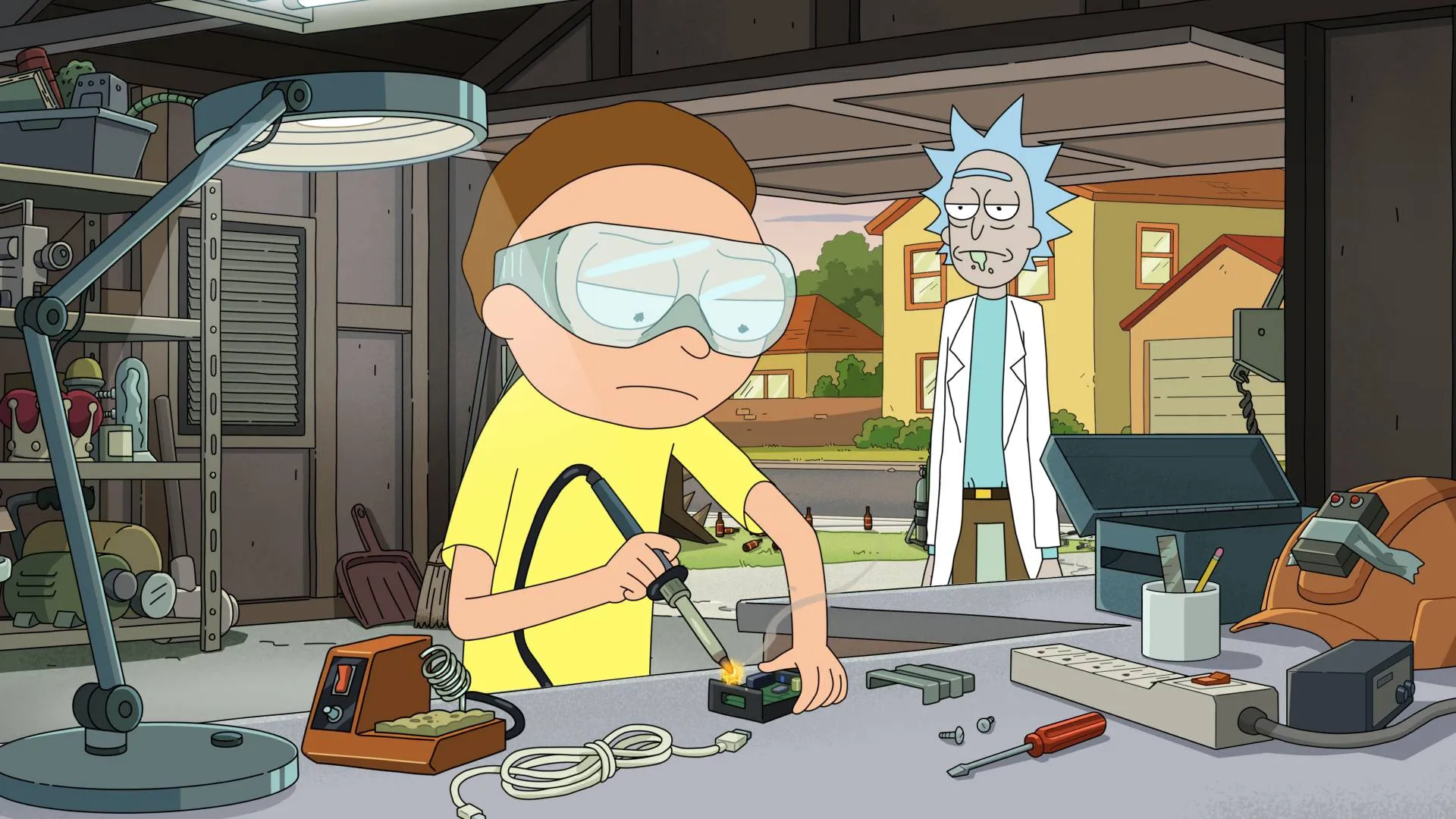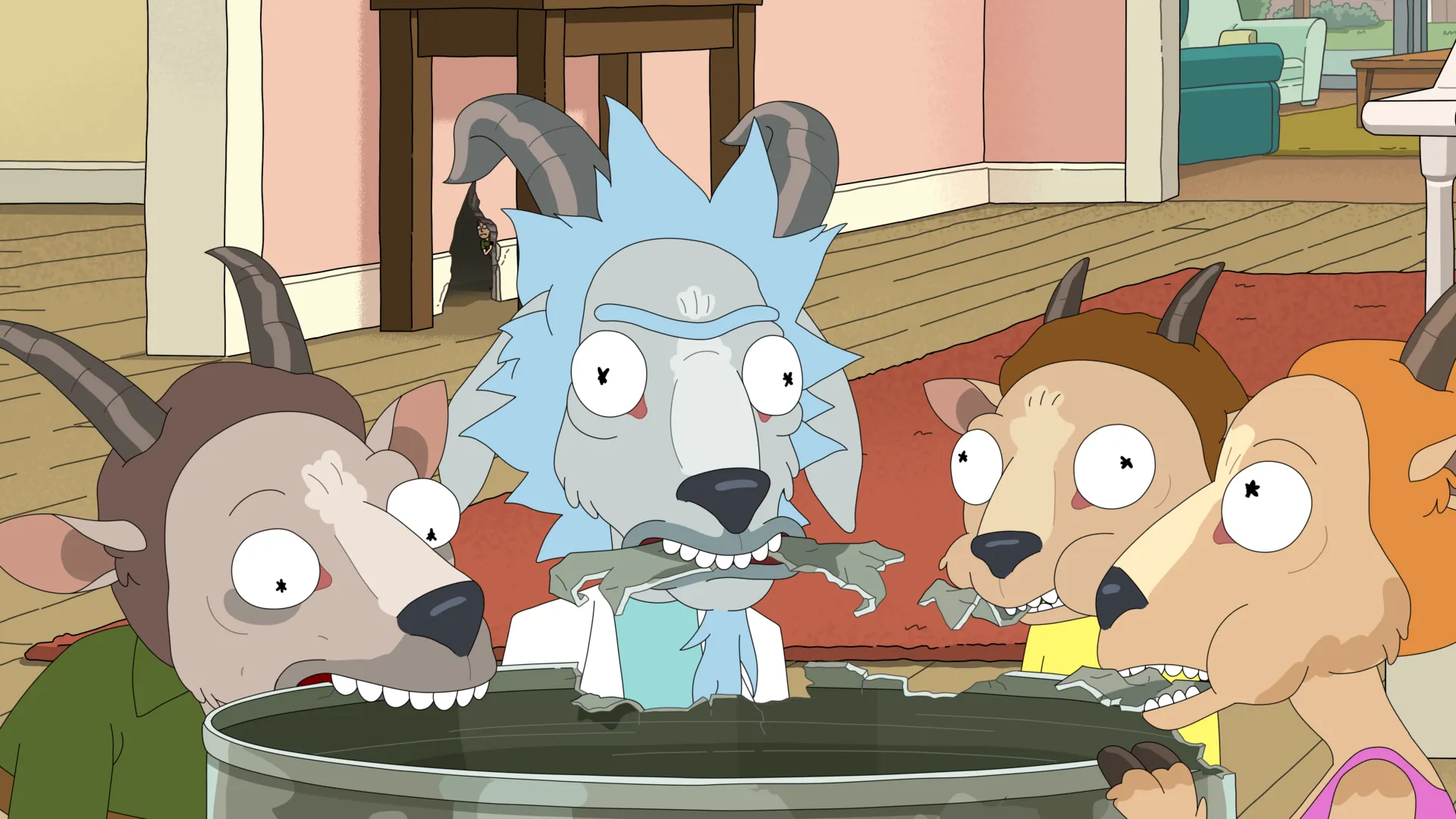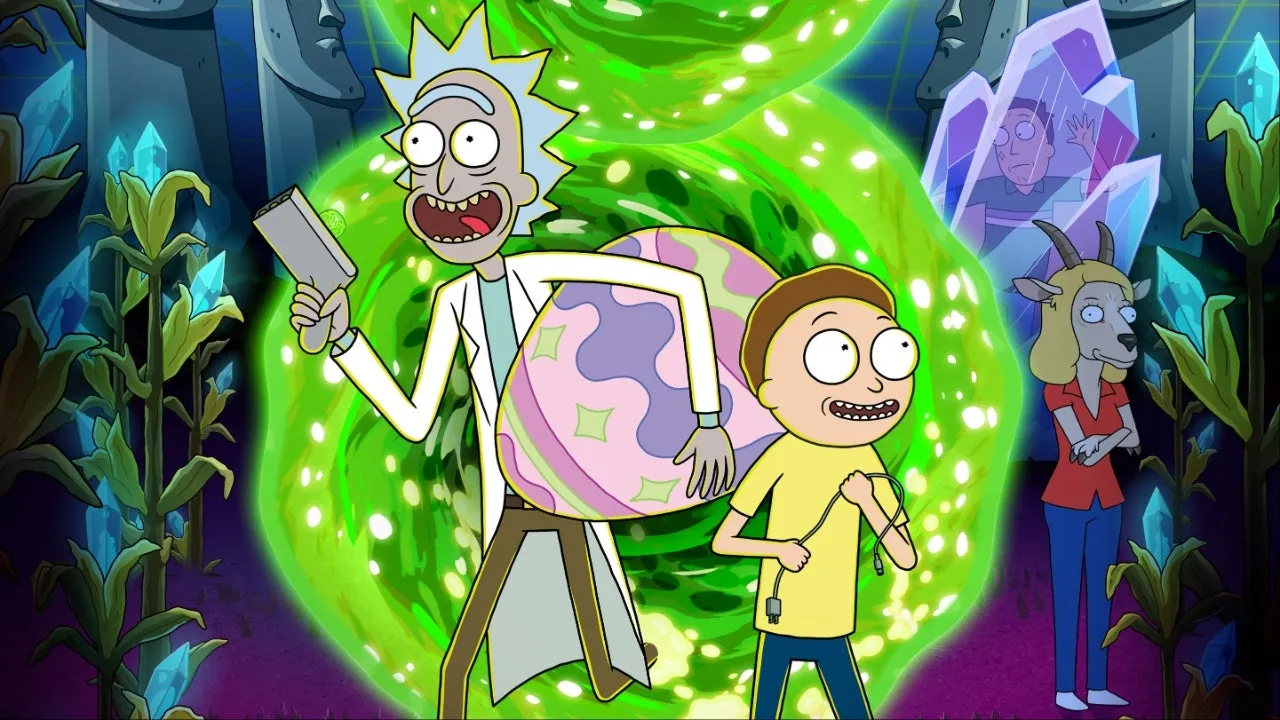Since its debut in 2013, Rick and Morty has woven high-concept sci-fi parodies around the often messy bonds of the Smith household. Season 8 arrives after an eighteen-month hiatus, stepping off from Rick’s multiverse-shattering finale that left the Citadel in ruins and Morty grappling with his own replaceability.
The premiere, “Summer of All Fears,” acts as both palate cleanser and reminder of what made the series compelling: sharp dialogue, off-kilter worldbuilding and moments when genuine emotion cuts through the absurdity.
This season opener resets the core duo’s rhythm, testing Rick’s appetite for chaos against Morty’s occasional moral tug. Summer and Jerry find themselves thrust into scenarios that highlight their growth—Summer as more than an afterthought and Jerry emerging from the background with unexpected agency.
Early scenes balance rapid-fire jokes with ethical conundrums, suggesting that the writers aim to revisit serialized stakes while preserving the stand-alone capers that longtime fans value. As Season 8 unfolds, it promises a mix of familiar escapades and hinted-at threads that may reshape how the show approaches family drama amid interdimensional thrills.
Character Dynamics & Development
Rick and Morty’s rapport often hinges on Rick’s mercurial genius clashing with Morty’s fraught idealism. Season 8 amplifies that tension: Morty pushes back when Rick barrels into moral gray zones, demanding accountability rather than blind obedience. Their exchanges feel calibrated, with Morty’s objections landing sharper than in past episodes. When Rick finally hesitates—if only momentarily—it undercuts his usual swagger, revealing a flicker of doubt that lends weight to each quip.
Power shifts this season emerge in subtle ways. Morty claims small victories—turning Rick’s own gadgets against him or outbidding his grandfather in debates over collateral damage. Those moments rarely upend the status quo, yet they hint at a Morty who’s inching toward genuine agency. Rick’s domineering presence never fades, but cracks appear when he stumbles over decisions that Morty orchestrates. Vulnerability tastes foreign to Rick, so when it surfaces, it’s almost comical in its abruptness and all the more affecting for its rarity.
Summer and Beth step out of Rick’s shadow. Summer’s no longer a tertiary foil; she drives key plot turns, whether hacking alien systems or mediating family chaos. Her arc this season shows a teenager who’s smart enough to outwit cosmic threats and emotionally nimble enough to challenge Rick’s selfish impulses. Beth grapples with guilt over past choices, especially when her medical expertise collides with Rick’s reckless experiments. That friction underscores her internal tug between loyalty and moral duty.
Jerry finds fresh ground under absurd pressure. Snippets of improbable heroism appear amid his bumbling routines, giving him small wins that taste genuine. Season 8 reframes his anxiety as cautious wisdom at unexpected times—when he outsmarts a religious cult of space Easter bunnies, for instance. His failures remain endearing rather than tiresome.
Guest characters leave lasting marks. A rogue Citadel survivor hints at greater multiverse conflict, while an alien con artist teases a possible return. These one-offs spark avenues for later episodes, suggesting that the season’s serialized threads might entwine more tightly than they first seem.
Episode Structure, Pacing & Balance
Rick and Morty Season 8 juggles stand-alone escapades with whispered serial mysteries. Of the first five episodes, three unfold as independent capers—a heist aboard a cryosleep ship, a rustic showdown at a rebuilt Citadel and an Easter conspiracy—while two episodes drop breadcrumbs toward Rick’s lingering vendetta and Morty’s evolving psyche. That split keeps casual viewers entertained and dedicated fans on alert for underlying shifts in Smith family dynamics.
Set pieces swagger in every episode. The “Cryo Mort a Ricker” heist crackles with tension as Rick’s gadgets collide with corporate security measures, each gadget reveal timed to fuel momentum. In “The Rick, The Mort & The Ugly,” tumbleweed-laden standoffs and grotesque caravan hacks punctuate a western motif, turning dusty plains into a playground for existential dread. These sequences aren’t window dressing—they push plot threads forward, whether by introducing new multiverse factions or revealing cracks in Rick’s armor.
Comedy and drama maintain a steady whip-crack rhythm. A rapid-fire pun lands just as Morty faces a genuinely dire choice, reminding viewers that levity and dread coexist. One episode may close with a neat resolution, while another halts on a cliffhanger—Morty’s fate suspended mid-scream—an intentional tease that primes anticipation.
Early episodes peak when tonal shifts catch the audience off-guard: a holiday special that veers from slapstick to solemn regret, or a family trap that begins as cartoonish torture and ends in heartfelt reconciliation. Midseason surprises loom in brief teases—glimpses of Rick Prime’s refuge and Summer’s uneasy alliances. These hints promise that, while each installment can stand on its own, the season’s architecture is anything but aimless.
Thematic Exploration & Emotional Resonance
Rick and Morty continues to interrogate morality through Rick’s chaotic brilliance. His schemes often trample collateral damage underfoot, yet moments of compassion catch the audience off-guard—a quiet apology after a failed experiment or hesitation before unleashing apocalyptic weapons.
Those instances humanize a character otherwise defined by amoral genius. Morty’s arc runs counterpoint to Rick’s grandiosity. He oscillates between embracing escapist adventures and shouldering real responsibility, especially when innocent beings suffer. That tension fuels much of the season’s emotional weight.
Family dysfunction thrives under cosmic duress. When Rick incarcerates his grandchildren in a simulation built to punish misbehavior, sibling dynamics fracture and then realign amid shared trauma. Jerry’s absurd misadventures with a cult of space Easter worshipers become unexpectedly poignant, casting his perpetual nervousness as a form of cautious wisdom. Episodes like the interdimensional heist shove the Smiths into literal danger chambers, laying bare resentments and alliances in swift, sharp beats. Those high-stakes scenarios mirror domestic tensions: a refusal to forgive, an unspoken plea for approval, a betrayal that feels all too intimate.
Existential dread punctuates stand-alone capers. A world where Mortys become livestock forces viewers to confront replaceability as a visceral horror. Another chapter dangles Morty’s digital self over an endless void—proof that cosmic terror needn’t roar to be effective. In these stories, identity unravels not through grand speeches but quiet revelations: a glance at a fractured family portrait, a desperate scream fading into silence.
Emotional highs emerge when humor bows to vulnerability. A fleeting shot of Rick’s face, drenched in remorse, contrasts with a punchline about alien plumbing. Summer’s rare confession of fear amid intergalactic chaos lands harder than any ray gun blast. Yet the season never abandons its comedic roots. One moment elicits genuine sympathy; the next, a bodily quirk or meta joke snaps the tension, reminding us why this show remains a potent blend of smart satire and subtle heart.
Humor, Satire & Writing Style
Rick and Morty Season 8 refines its comedy through a blend of absurd setups and razor-sharp payoffs. Writers engineer high-concept premises—a heist aboard a ship where every crew member is asleep—to spring surprise punchlines that land with surgical precision.
Physical humor remains unapologetically brutal: limbs flail in slow motion during intergalactic chases, gore explodes at narrative beats, then a throwaway meta-line deflates the tension. That oscillation between visceral shock and self-aware quips feels aligned with modern adult animation, where shows like Solar Opposites also toy with cartoon violence as commentary.
Genre tropes wear fresh masks here. The wild west standoff in “The Rick, The Mort & The Ugly” riffles through spaghetti western conventions, only to puncture them with references to Morty livestock auctions. Holiday specials—often sitcom staples—get skewered through an Easter-themed cult that worships Jerry’s hapless spirit. Those set pieces reflect a broader industry shift: viewers now expect satire that both honors and undermines familiar formulas, and Rick and Morty delivers on that ticket.
Scripts shift tone deftly, never settling into pure riffing or solemn critique. One scene crackles with jaunty wordplay—Rick lecturing on quantum platypus eggs—followed by a pointed barb about consumerism in interdimensional malls. That balance preserves the show’s voice while nudging it toward new edges.
Callbacks reward attentive fans without alienating newcomers. A snorkel-powered death race gag resurfaces in a snow globe heist; Rick’s offhand contempt for bureaucracy echoes early seasons but gains sting amid current political disillusionment. When running jokes zoom back at unexpected moments, they underscore the writers’ command of pacing: each quip compounds cumulative effect, making the comedy feel both spontaneous and meticulously constructed.
Visual Presentation & Sound Design
Rick and Morty Season 8 leans into distinct animation palettes to delineate its myriad worlds. The heist sequence glows with cold neon blues, while the western dystopia unfolds in dust-streaked ochres. Creature and environment designs hold microscopic detail—from the wobbling pores on a grotesque Morty livestock to the glint of portal fluid as it droplets mid-air.
Special effects punctuate key moments. Rapid cuts accelerate chase scenes, then freeze-frame in slow motion to savor visceral gore—splintered metal and alien sinew painted with uncanny precision. Portal travel receives its own visual flourish: trajectories traced by iridescent arcs that shimmer against starfields, reminding viewers why the show once redefined cartoon space opera.
Music and sound design remain integral. The main theme resurfaces in unexpected remixes—a mournful trumpet in a family reunion, a jittery synthesizer during a high-stakes breach. Sound effects heighten absurdity: a fart-powered hovercraft hums like a faulty generator, then roars when boosted by cosmic energy. Such choices amplify both humor and tension without ever feeling gimmicky.
Production polish matches the series’ pedigree. Linework is crisp, color grading richer than seasons past and background art packed with Easter eggs. Standout sequences—like the Citadel’s neon-lit carnage—underscore the technical ambition that keeps Rick and Morty visually exhilarating, even after eight seasons.
Performances & Voice Acting
Ian Cardoni and Harry Belden step into legendary shoes with assured precision. Cardoni’s Rick retains that venom-laced swagger, yet he injects subtle warmth when Rick’s veneer cracks. Belden’s Morty oscillates between breathless terror and moments of surprising clarity, giving Morty a voice that feels lived-in rather than imitative. Their interplay anchors each episode, turning rapid-fire insults and panicked screams into a believable familial recoil.
Spencer Grammer grounds Summer with a confident edge; her tone shifts seamlessly from sarcastic asides to genuine concern when stakes turn personal. Sarah Chalke’s Beth carries a measured resolve, her delivery balancing scientific authority with the frustration of a daughter perpetually outshone by her father. Chris Parnell’s Jerry remains a lovably insecure foil, but this season he slips in rare moments of quiet assertiveness—each delivered with that trademark nasal timbre.
Guest actors sparkle in one-off roles. An alien crime boss voiced by Nolan North melds gravitas with sly humor, while Kari Wahlgren’s rendition of a cult high priestess amplifies the absurdity of interstellar zealotry. These appearances enrich individual stories without stealing center stage.
The ensemble chemistry feels tight. Banter snaps in well-timed exchanges—Rick’s taunts, Morty’s retorts, Summer’s eye rolls—guided by voice direction that balances chaos with cohesion. Each performance serves the narrative, ensuring character moments land with both comedic punch and emotional weight.
Rick and Morty premiered on December 2, 2013, on Adult Swim and has received critical acclaim for its originality, humor, and storytelling. The series has won several awards, including two Primetime Emmy Awards for Outstanding Animated Program. As of May 2025, the show has completed seven seasons, with the eighth season scheduled to premiere on May 25, 2025.
Full Credits
Creators: Justin Roiland, Dan Harmon
Writers: Dan Harmon, Justin Roiland, Ryan Ridley, Tom Kauffman, Mike McMahan, Scott Marder, James Siciliano, Albro Lundy, Heather Anne Campbell, Nick Rutherford, among others
Producers: J. Michael Mendel (Seasons 1–4), Kenny Micka (Pilot), Ollie Green, Sydney Ryan, Ryan Ridley
Executive Producers: Dan Harmon, Justin Roiland (Seasons 1–6), Scott Marder (Seasons 5–present), Steve Levy (Season 7–present), Albro Lundy (Season 7–present), James Siciliano (Season 7–present)
Cast:
Justin Roiland (Seasons 1–6): Rick Sanchez, Morty Smith, and various other characters
Ian Cardoni (Season 7–present): Rick Sanchez
Harry Belden (Season 7–present): Morty Smith
Chris Parnell: Jerry Smith
Spencer Grammer: Summer Smith
Sarah Chalke: Beth Smith
Directors: Wes Archer, Pete Michels, Bryan Newton, Jacob Hair, Juan Meza-León, Erica Hayes, among others
Editors: Lee Harting, others
Composer: Ryan Elder
The Review
Rick and Morty Season 8 Review
Season 8 revives the show’s signature wit and inventiveness, balancing high-octane set pieces with moments of genuine family drama. While it leans on familiar formulas, subtle shifts in character dynamics and sharp satire keep the episodes engaging.
PROS
- Crisp episodic arcs fuse humor with stakes
- Nuanced shifts in Rick and Morty’s dynamic
- Sharp satire of genre tropes and institutions
- Strong voice performances from lead and supporting cast
- Polished animation and inventive world designs
CONS
- Heavy reliance on familiar formulas
- Limited advancement of the overarching storyline
- Occasional uneven tone between comedy and drama
- Jerry’s growth remains marginal































